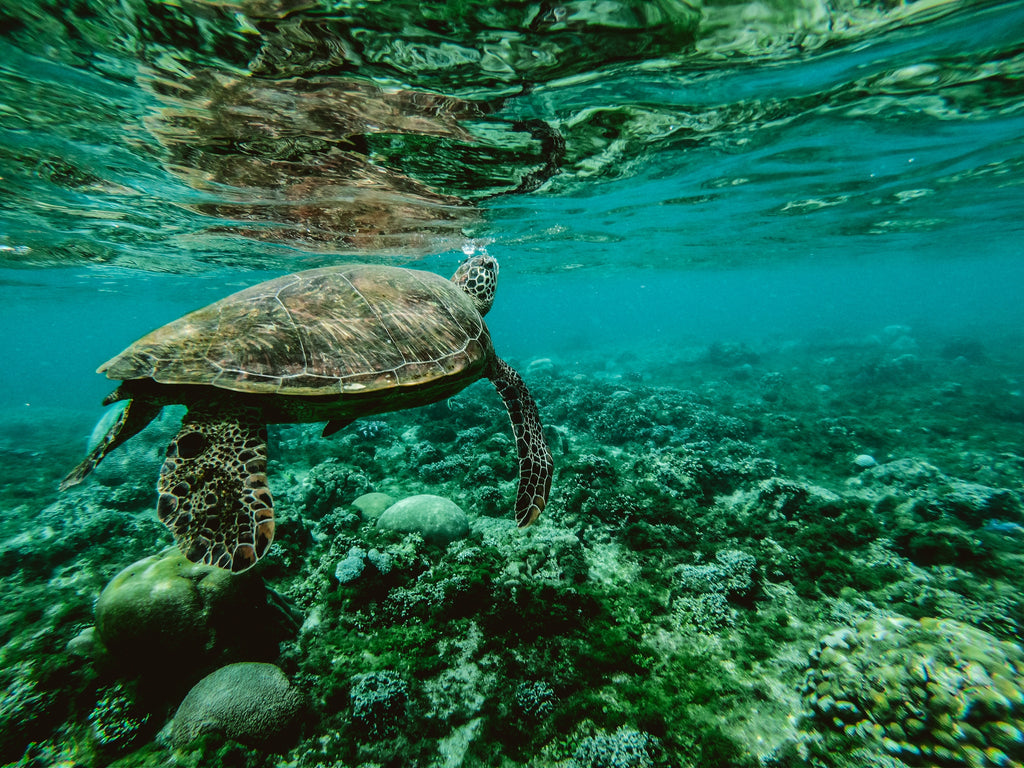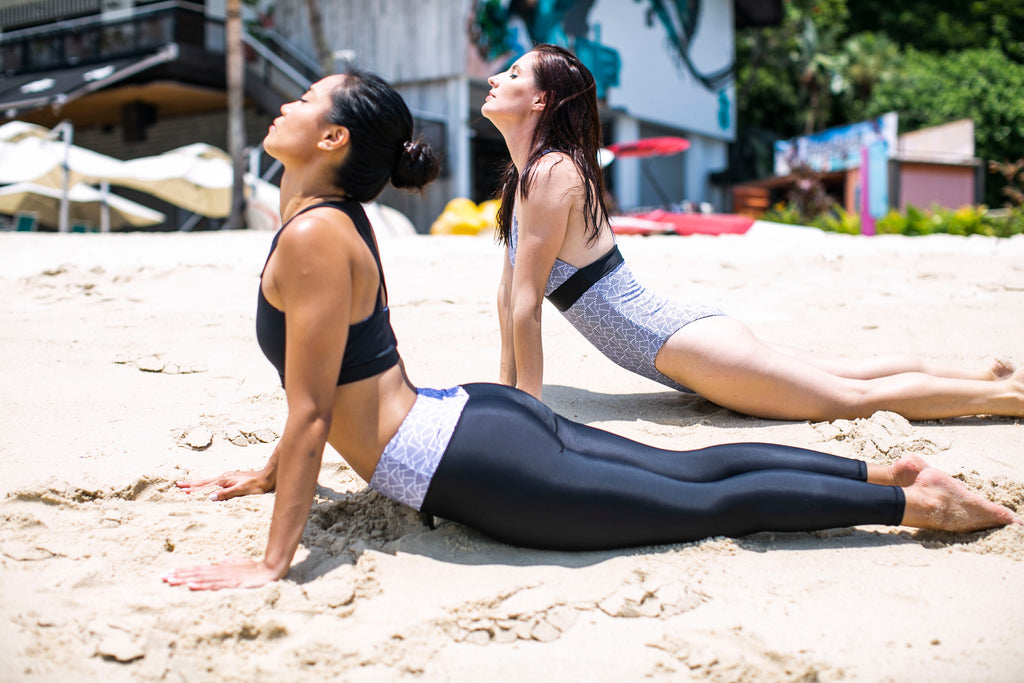Hey there, this is Toni, the founder of August Society. Over the past few years I’ve had the pleasure of meeting many of you in person at events and pop ups and have chatted with you about how we make swimwear from recycled plastic. I’ve decided to share some insights and answers to questions I get asked frequently so you can learn more about how the fashion choices we make impact the world around us.
1) So, what does make sustainable swimwear sustainable?
Fashion is one of the most polluting industries out there, so we can do our part by wearing recycled fabrics. What does that mean? Swimwear is made from synthetic fabrics such as nylon and polyester, which are derived from petroleum products. They’re essentially plastics that don’t biodegrade for centuries. Our raw material is waste plastic – Econyl® recycled nylon or Repreve® recycled polyester derived from plastic bottles.

Recycled nylon comes from sources such as ghost fishing nets or used carpeting or upholstery. Ghost fishing nets are nets that have been lost or abandoned at sea – experts have estimated that there are roughly 640 000 tonnes of them currently in our ocean, accounting for 10 percent of the total plastic waste in the sea. This waste is collected on an industrial scale globally, purified and melted down, and my supplier in Italy uses the new fibres to weave into fabric. This mill also uses as many eco-friendly processes as possible, such as only using renewable sources of electricity and using 48.3% recycled water in its production process in 2018. From using a cutting-edge fumes treatment plant, their emissions into the atmosphere are 10 times lower than the limits set by the European law.
Also by using digital printing for all of my custom prints, we reduce the amount of ink and dye used in the process and reduce the amount of fabric wasted overall.
2) But what about all those microplastics going into the water supply? Doesn’t swimwear contribute to that?
A big concern with using synthetic fibres is the release of microplastics into the oceans when these clothes are washed. They are then ingested by marine life and make it into our food supply. The challenge with swimwear is that there currently is no better option from a technical perspective than synthetic fibres. Even if you make swimwear out of lets say, organic cotton, you still need to mix it with spandex (synthetic!) in order to get it to have some stretch. If it doesn’t stretch to be form fitting, it will just be a soggy mess in the water. Swimwear also needs to be super durable as chlorine, saltwater, direct sunlight and sun creams are very, very harsh. Natural fibres will not last as long as synthetic fabrics in these conditions, so you’ll just end up wearing out and throwing away your swimsuits more frequently, which then puts us back at square one.

Our textile manufacturer uses a closed effluent system – which means that they do a first wash to capture as many released microplastics as possible at the start. So the best we can do right now is use recycled nylon and polyester – it’s the least bad option, if you can call it that. Or skinny dip, that’s the most sustainable way! :)
3) Have you always been into sustainable fashion?
For me, like everyone, it has been a journey where I’m always learning. Years ago, I was like everyone else – I’d buy cheap, trendy clothes from fast fashion retailers and think I can donate away the problem once I was done with the clothes. But after starting the brand and learning more and more about the process and how clothes are made, I couldn’t turn a blind eye to everything I learned, from the ecological to human cost of the fashion industry. That $5 t-shirt comes from somewhere and is made by someone – does that someone work in a safe environment and is he or she paid a living wage?

Now I’m very, very careful about what I buy – I very rarely buy new clothes until I have worn what I own to death and then replace them. I make sure they fit well and can be matched with many things in my wardrobe. For special occasions, I’ve started buying second hand, swapping or renting.
4) What’s your take on large fast fashion retailers jumping on the green bandwagon?
I know there are a lot of people who are skeptical that fast fashion brands are “greenwashing” their marketing – i.e. making their products and processes out to be more sustainable than they really are. However, I’m of the mind that the only way we can make the fashion industry more sustainable permanently is if these large players take the lead.
Yes as individuals we can do our part, and it’s great that there are so many small independent fashion brands out there trying to instigate change. However, it’s the big players who have the budget to invest in the needed technology, the clout to use marketing to change consumer behaviour, and the production volumes to actually make any sort of difference at scale.
For example, take textile recycling - right now, this is very difficult. It’s almost impossible to sort textile waste into individual composite fibres in a cost effective way. However, the H&M Foundation is researching mixed textile recycling so that you don’t have to sort first - and it takes an organization like theirs to have the funds to do this kind of research. Cutting-edge sustainable textiles, for example, those derived from pineapple fibres and other fruits, are great for the planet, but require a large investment for development and production.

We need larger players to take the lead on this progress. Imagine if Inditex just makes 10% of their supply chain more sustainable, what that impact would be. What consumers can do is lobby and feedback to their favourite brands – encourage them to use more sustainable practices and materials, hold them accountable. In the end, they’ll have no choice but to listen.
5) What should customers be looking for if they want to be more sustainable in their swimwear?
Make sure you know where your swimwear comes from and what materials it contains. Buying swimwear made out of recycled waste plastic is great – but in general I would advise spending more on a quality swimsuit that will last you for years. Get a classic cut and colours so you won’t look dated, and look for brands that use XtraLife Lycra®, which is technology that makes sure the stretchy fabric keeps its shape.

Our latest pieces are also reversible and can be used for sport as well as swimming – so you can buy fewer pieces and use them more. Because swimwear can’t be easily donated and swapped due to hygiene considerations, the goal is to prevent fewer pieces from ending up in a landfill.
Travel on,

Toni Chan
August Society
Founder & Creative Director


